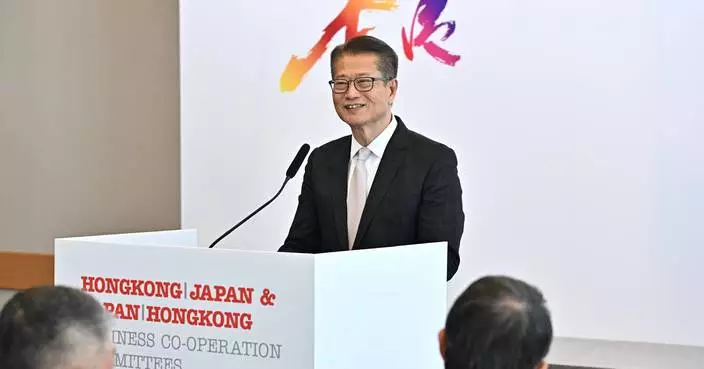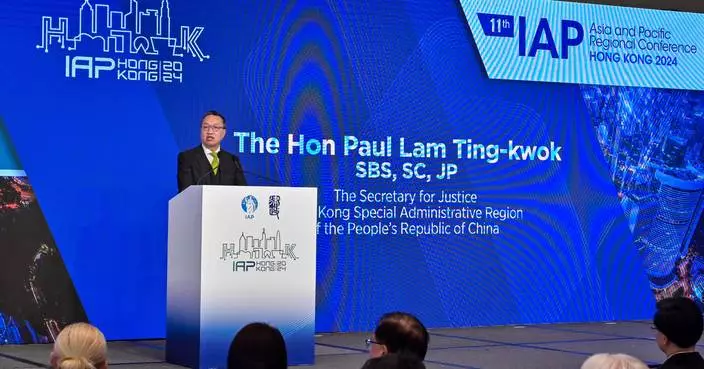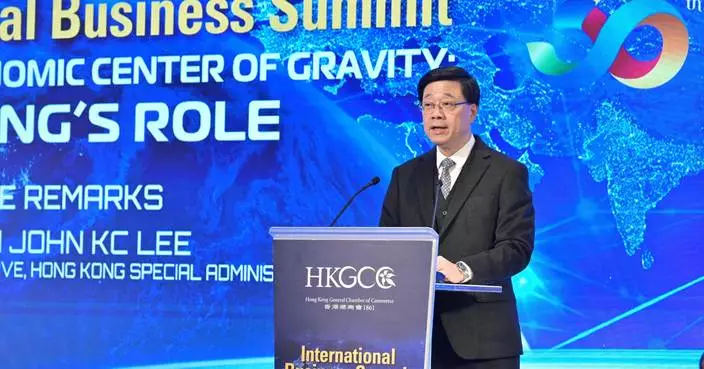Key statistics on business performance and operating characteristics of industrial sector in 2023
According to the results of the 2023 Annual Survey of Economic Activities - Industrial Sector released today (November 28) by the Census and Statistics Department (C&SD), the manufacturing sector's total receipts (comprising sales and other receipts) amounted to $243.3 billion in 2023, representing an increase of 12.1% compared with 2022; on a per establishment basis, total receipts increased by 12.5% compared with 2022 to $37.7 million in 2023.
Operating expenses and compensation of employees of the manufacturing sector altogether amounted to $226.8 billion in 2023, representing an increase of 13.2% compared with 2022; on a per establishment basis, they increased by 13.6% compared with 2022 to $35.2 million in 2023.
Gross surplus of the manufacturing sector, which is equal to total receipts less operating expenses and compensation of employees, decreased by 1.2% compared with 2022 to $16.5 billion in 2023; on a per establishment basis, gross surplus decreased by 0.8% compared with 2022 to $2.6 million in 2023. Gross surplus accounted for 6.8% of total receipts of this sector in 2023, down by 0.9 percentage point compared with 2022.
Industry value added of the manufacturing sector, which is a measure of its contribution to Hong Kong's Gross Domestic Product, increased by 4.8% compared with 2022 to $37.0 billion in 2023; on a per establishment basis, the industry value added was $5.7 million in 2023, which increased by 5.2% compared with 2022.
According to the survey results, it was estimated that the manufacturing sector comprised some 6 400 establishments and engaged about 76 700 persons, or an average of 11.9 persons per establishment in 2023.
Within the manufacturing sector, the four largest industry groupings in terms of industry value added in 2023 were (1) food, beverages and tobacco, (2) metal products, machinery and equipment, (3) chemicals, rubber, plastics and non-metallic mineral products, and (4) paper products, printing and reproduction of recorded media. They together accounted for 89.1% of the industry value added of the manufacturing sector.
In the food, beverages and tobacco industry, total receipts amounted to $46.8 billion while operating expenses and compensation of employees totalled $40.5 billion in 2023. Gross surplus amounted to $6.3 billion, accounting for 13.5% of total receipts in 2023. Industry value added increased by 7.8% compared with 2022 to $13.0 billion.
In the metal products, machinery and equipment industry, total receipts amounted to $143.0 billion while operating expenses and compensation of employees totalled $139.3 billion in 2023. Gross surplus amounted to $3.7 billion, accounting for 2.6% of total receipts in 2023. Industry value added increased by 5.4% compared with 2022 to $10.0 billion.
In the chemicals, rubber, plastics and non-metallic mineral products industry, total receipts amounted to $27.7 billion while operating expenses and compensation of employees totalled $23.8 billion in 2023. Gross surplus amounted to $3.9 billion, accounting for 14.1% of total receipts in 2023. Industry value added increased by 8.1% compared with 2022 to $6.4 billion.
In the paper products, printing and reproduction of recorded media industry, total receipts amounted to $10.7 billion while operating expenses and compensation of employees totalled $9.5 billion in 2023. Gross surplus amounted to $1.2 billion, accounting for 10.8% of total receipts in 2023. Industry value added increased by 7.7% compared with 2022 to $3.6 billion.
In addition to manufacturing establishments, the industrial sector also includes establishments engaged in mining and quarrying; electricity and gas supply; and sewerage, waste management and remediation activities. Selected statistics for the industrial sector (except mining and quarrying) in 2023 are shown in the attached table.
More detailed survey results on the industrial sector will be given in the report "Key Statistics on Business Performance and Operating Characteristics of the Industrial Sector in 2023". Users can browse and download this report at the website of the C&SD (www.censtatd.gov.hk/en/EIndexbySubject.html?pcode=B1080012&scode=310) as from end-December 2024.
For enquiries about the key statistics on business performance and operating characteristics of the industrial sector, please contact the Industrial Production Statistics Section of the C&SD (Tel: 3903 7246; email: manufacturing@censtatd.gov.hk).
Task Group on New Medical School announces invitation for proposals from universities to establish third medical school
The Task Group on New Medical School, co-chaired by the Secretary for Health and the Secretary for Education, convened its second meeting today (November 28), setting out 10 key parameters for consideration of proposals on the establishment of a third medical school. The Task Group decided to issue a letter of invitation on December 2 to all universities funded by the University Grants Committee (UGC) to invite universities interested in establishing a new medical school to submit proposals by March 17 next year.
The Secretary for Health, Professor Lo Chung-mau, said, "Hong Kong is facing challenges posed by an ageing population and a growing demand for healthcare services. The establishment of the third medical school is crucial to the future development of healthcare services in the city. Thanks to the advice from various expert advisors, the Task Group has already formulated the strategic direction and targeted position for establishing a new medical school over the past month or so since its formation. The Task Group considered that the new medical school should shoulder the mission of nurturing more talented doctors for practice in Hong Kong, thereby supporting the local healthcare system with a view to enhancing both the quality and quantity of healthcare services. Furthermore, the Task Group envisioned that the new medical school will adopt an innovative strategic positioning in pursuit of complementary development with the two existing medical schools to promote the excellence of medical education and research in Hong Kong, and to attract more local, Mainland and overseas medical talent to engage in teaching and research work, dovetailing with the city's development into an international medical training, research and innovation hub."
The Acting Secretary for Education, Dr Sze Chun-fai, said "The establishment of the new medical school can nurture more medical talent and enhance the academic and research excellence of the medical sector, which is conducive to developing Hong Kong into an international post-secondary education hub. The Education Bureau expects the new medical school to contribute to the overall development of the relevant university, with detailed planning on interdisciplinary or intersectoral collaborations, teaching resources, quality assurance, research strategy, sources of staff and students, and institutional governance etc. The new medical school should also interface with the applicable frameworks of the UGC. Moreover, as part of the Northern Metropolis University Town, the new medical school can introduce more research collaborations and exchange projects with neighbouring post-secondary institutions or industries in a flexible and innovative manner, which will help enhance the overall synergy."
The Task Group considered that UGC-funded universities are in a better position to establish a new medical school. To achieve the aforementioned objectives, the following 10 key parameters for consideration were set out by the Task Group for the universities' submission of proposals regarding the establishment of the third medical school:
1. Innovative strategic positioning: Complement the development of the two existing medical schools in Hong Kong to promote diversification and internationalisation;
2. Staffing: Recruit high-calibre international and local teaching professionals to establish a professional medical teaching and research team;
3. Campus and teaching facilities: Plan a modernised campus equipped with state-of-the-art teaching facilities to support innovative medical learning models;
4. Clinical exposure and learning resources: Illustrate the plan for a teaching hospital, and collaborate with healthcare institutions in Hong Kong and the Guangdong-Hong Kong-Macao Greater Bay Area to provide diverse clinical training opportunities;
5. Curriculum structure and assessment methodologies: Adopt an accredited medical curriculum framework, incorporating competency-based assessments and innovative teaching methods, such as provision of early clinical exposure;
6. Student admission arrangements: Offer a graduate-entry programme to attract both local and non-local students, achieving diversification and internationalisation of the medical curriculum;
7. Funding arrangements: Develop a diversified funding plan, combined with viable financial management, to ensure the long-term and sustainable development of the medical school;
8. Implementation plan: Formulate a comprehensive roadmap for the medical school's implementation, with phased progression in infrastructure construction, curriculum design, and faculty recruitment;
9. Teaching and learning quality: Ensure that the quality of medical curriculum meets international high standards, and leverage on innovative teaching and assessment methods to nurture high-quality medical professionals and enrich whole-person development; and
10. Research excellence: Promote medical innovation and scientific research development, and foster global partnerships to position the school as a leader in regional and international medical research.
The Task Group will issue invitations for proposals to all UGC-funded universities on December 2. The Government will hold a briefing session on December 10 to introduce to interested universities the arrangements for the submission of proposals on the establishment of a new medical school. The Secretariat of the Task Group will send out invitations for attendance to university representatives in due course. Universities interested in establishing a new medical school are required to submit their proposals by March 17 next year. At the next step, the Task Group will formulate concrete criteria for assessing proposals to ensure that a qualified and eligible university will be selected in a transparent and fair manner for the establishment of the new medical school. It is anticipated that the Task Group will complete its assessments and make recommendations to the Government within next year.
The Task Group on New Medical School was established in October this yearto take up the responsibilities of devising the direction and parameters for establishing the new medical school, endeavouring to nurture more local medical talent and enhance Hong Kong's healthcare system, as well as promoting various measures for Hong Kong to become an international medical training, research and innovation hub. The Task Group comprises seasoned local, Mainland and overseas academics for medical teaching and university management, professionals, the Chairman of the Medical Council of Hong Kong, the President of the Hong Kong Academy of Medicine, as well as representatives from relevant government bureaux and departments.

Task Group on New Medical School announces invitation for proposals from universities to establish third medical school Source: HKSAR Government Press Releases









